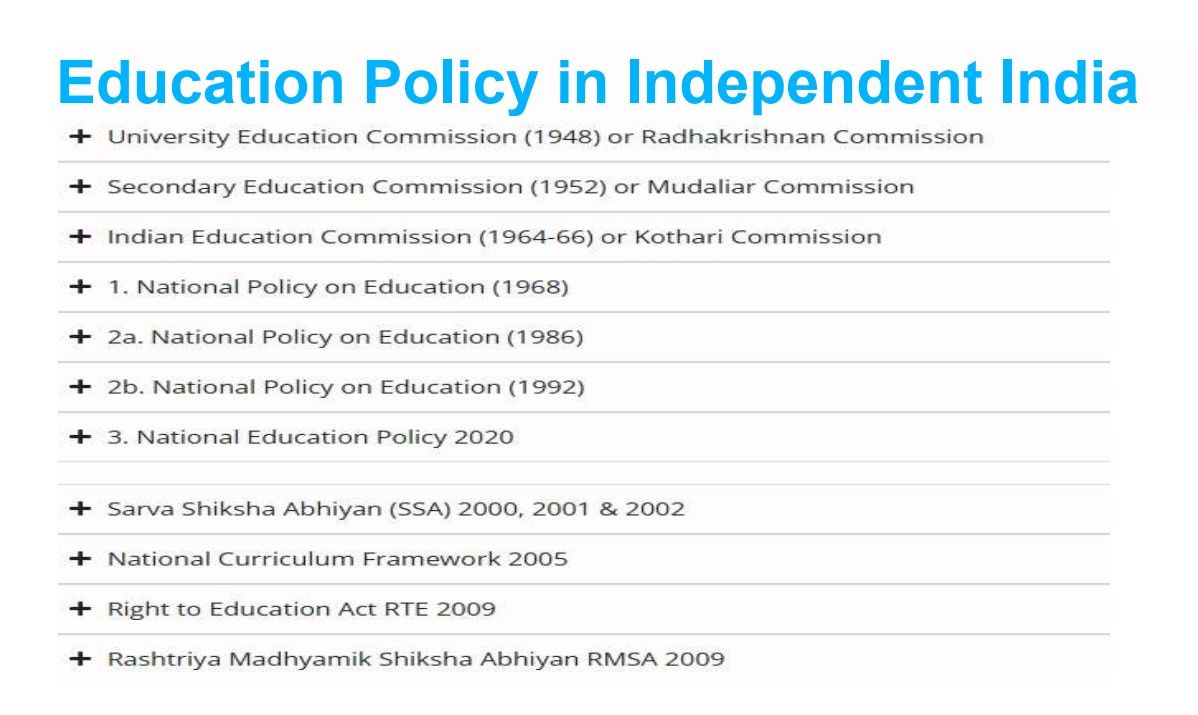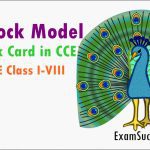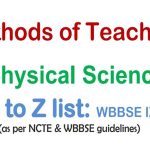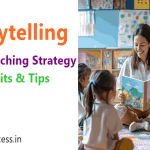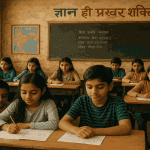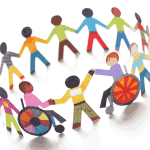Table of Contents
ToggleEducation Policy in Pre-Independent India
স্বাধীনতার পূর্বে ভারতবর্ষের যে শিক্ষা নীতি গুলির অস্তিত্ব খুঁজে পাওয়া যায়, সেগুলিকে প্রধানত দুই ভাগে ভাগ করে আলোচনা করাটা সুবিধা।
Pre-British Period
- Aryans were the first to make a significant attempt in formulating an education policy in India.
- The major universities in ancient India were Nalanda(Brahminism) and Taxila were known
- During the Mughal period: The Maktabas(a primary school) and Madrasas(schools for higher learning) were first confined to Muslims, but later, Hindus and Muslims had begun to study each other’s languages.
British Period
- চার্টার আইন, ১৮১৩ (Charter Act, 1813)
- প্রথমবার ব্রিটিশ সরকার ভারতে শিক্ষার প্রসারে অর্থ বরাদ্দ করে — বছরে ₹১ লাখ।
- দুটি মতবাদের মধ্যে বিরোধ সৃষ্টি হয়:
- ওরিয়েন্টালিস্টরা (Orientalists): দেশীয় ভাষা ও প্রাচীন শিক্ষা (সংস্কৃত, ফারসি) চালু রাখতে চান।
- অ্যাংলিসিস্টরা (Anglicists): ইংরেজি ভাষা ও পাশ্চাত্য শিক্ষা চালু করতে চান।
- ম্যাকলে মিনিট, ১৮৩৫ (Macaulay’s Minute)
- থমাস বাবিংটন ম্যাকলে ইংরেজি শিক্ষার পক্ষে মত দেন।
- তিনি এমন একটি শ্রেণি গঠনের প্রস্তাব দেন যারা “রক্তে ও বর্ণে ভারতীয়, কিন্তু রুচি ও চিন্তায় ইংরেজ।”
- এর ফলে ইংলিশ এডুকেশন অ্যাক্ট, ১৮৩৫ গৃহীত হয় এবং ইংরেজি মাধ্যম চালু হয়।
- Wood’s Despatch (1854) – “Magna Carta of English Education”
- এটি ব্রিটিশ আমলের শিক্ষার ইতিহাসে এক যুগান্তকারী পদক্ষেপ।
- প্রধান সুপারিশ:
- প্রতিটি প্রদেশে শিক্ষা দফতর (Department of Education) গঠন।
- কলকাতা, বোম্বে ও মাদ্রাজে বিশ্ববিদ্যালয় প্রতিষ্ঠা (১৮৫৭ সালে)।
- নারী শিক্ষা ও শিক্ষক প্রশিক্ষণেরপ্রচার।
- প্রাথমিক স্তরে স্থানীয় ভাষার ব্যবহার।
- আধুনিক শিক্ষাব্যবস্থার ভিত্তি স্থাপন করে।
- হান্টার কমিশন, ১৮৮২–৮৩
- সভাপতি স্যার উইলিয়াম হান্টার।
- মূলত প্রাথমিক ও মাধ্যমিক শিক্ষার উন্নয়ণেরওপর জোর দেয়।
- সুপারিশ:
- জনসাধারণের জন্য শিক্ষা বিস্তার।
- বেসরকারি উদ্যোগে শিক্ষা প্রতিষ্ঠান গঠনকে উৎসাহ।
- প্রাথমিক শিক্ষা স্থানীয় প্রশাসনের হাতে ছেড়ে দেওয়া।
- Indian Universities Commission (1902) & Indian Universities Act (1904)
- উচ্চশিক্ষার মান উন্নয়নের জন্য গঠিত।
- ১৯০৪ সালের আইন্যমাধ্যমে বিশ্ববিদ্যালয়ের উপর সরকারের নিয়ন্ত্রণ বৃদ্ধি করা হয়।
- ভারতীয়দের অংশগ্রহণ সীমিত করা হয়।
- স্যাডলার কমিশন, ১৯১৭–১৯
- কলকাতা বিশ্ববিদ্যালয়ের সংস্কারেরজন্য গঠিত।
- প্রধান প্রস্তাব:
- বিশ্ববিদ্যালয়ে ভর্তি হওয়ার আগে ১২ বছরের স্কুল শিক্ষা।
- প্রযুক্তিগত ও কারিগরি শিক্ষার প্রসার।
- মেয়েদের ও শিক্ষকদের শিক্ষার উন্নয়ন।
- গবেষণা ও উচ্চতর শিক্ষায় উৎসাহ।
- হার্টগ কমিটি, ১৯২৯
- শিক্ষার পরিমাণের চেয়ে গুণগত মানে জোর দেয়।
- সুপারিশ:
- পাঠ্যক্রমে বৈচিত্র্য আনা।
- প্রাথমিক শিক্ষার মানোন্নয়ন।
- শিক্ষক প্রশিক্ষণ ব্যবস্থার উন্নতি।
- সার্জেন্ট পরিকল্পনা, ১৯৪৪ (Sargent Plan)
- প্রণেতা স্যার জন সার্জেন্ট, শিক্ষা উপদেষ্টা।
- একটি পূর্ণাঙ্গ শিক্ষা পরিকল্পনা:
- ৬–১৪ বছরের শিশুদের জন্য বিনামূল্যে ও বাধ্যতামূলক শিক্ষা।
- প্রাপ্তবয়স্ক শিক্ষা ও প্রযুক্তিগত শিক্ষার প্রসার।
- নারী শিক্ষার সম্প্রসারণ।
- কারিগরি ও বৃত্তিমূলক বিদ্যালয় স্থাপন।
- এটি স্বাধীনোত্তর ভারতের শিক্ষানীতির ভিত্তি রচনা করে।
Education Policy in Independent India
স্বাধীন ভারতের শিক্ষানীতি দেশের সামাজিক, অর্থনৈতিক ও সাংস্কৃতিক উন্নয়নের মূল ভিত্তি হিসেবে কাজ করেছে। এই নীতির মূল লক্ষ্য ছিল শিক্ষার গণতন্ত্রীকরণ, সমান সুযোগ প্রদান, নারী ও প্রান্তিক জনগোষ্ঠীর অন্তর্ভুক্তি, এবং মানসম্মত শিক্ষা নিশ্চিত করা।
University Education Commission (1948) or Radhakrishnan Commission
বিশ্ববিদ্যালয় শিক্ষা কমিশন, ১৯৪৮ (University Education Commission, 1948)
প্রেক্ষাপট (Background)
- ভারত স্বাধীন হওয়ার পর শিক্ষাব্যবস্থার পুনর্গঠন প্রয়োজন হয়।
- বিশ্ববিদ্যালয়গুলির মান ও উদ্দেশ্য নিয়ে ব্যাপক সমালোচনা চলছিল।
- দেশের উন্নয়নের জন্য শিক্ষার নতুন দিকনির্দেশনা দরকার ছিল।
- এই প্রেক্ষিতে ১৯৪৮ সালে কমিশন গঠন করা হয়।
- সভাপতি ছিলেন ড. সার্ভেপল্লী রাধাকৃষ্ণন।
উদ্দেশ্য (Objectives)
- স্বাধীন ভারতের বিশ্ববিদ্যালয় শিক্ষার মান মূল্যায়ন করা।
- উচ্চশিক্ষাকে জাতীয় জীবনের চাহিদার সাথে যুক্ত করা।
- শিক্ষক, ছাত্র, ও পাঠ্যক্রমের মান উন্নয়নের উপায় খোঁজা।
- গবেষণা ও সৃজনশীল চিন্তার প্রসার ঘটানো।
প্রধান সুপারিশসমূহ (Main Recommendations)
- শিক্ষার উদ্দেশ্য: নৈতিকতা, মানবিকতা ও জাতীয় চেতনার বিকাশ।
- বিশ্ববিদ্যালয় সংস্কার: প্রশাসনিক স্বায়ত্তশাসন, শিক্ষক প্রশিক্ষণ ও উন্নত বেতন।
- গবেষণা: গবেষণার জন্য বিশেষ তহবিল গঠন ও বিজ্ঞান-প্রযুক্তি শিক্ষা বাড়ানো।
- শিক্ষার মাধ্যম: ইংরেজি ও মাতৃভাষা উভয়ের ব্যবহার।
- ভর্তি ব্যবস্থা: যোগ্যতা ও মেধার ভিত্তিতে ভর্তি প্রক্রিয়া।
- ছাত্রজীবন: চরিত্রগঠনমূলক শিক্ষা ও ক্রীড়া-সাংস্কৃতিক কার্যক্রমের উপর গুরুত্ব।
সাফল্য ও গুরুত্ব (Achievements & Importance)
- স্বাধীন ভারতের প্রথম শিক্ষানীতি নির্ধারক কমিশন।
- আধুনিক বিশ্ববিদ্যালয় শিক্ষার ভিত্তি স্থাপন।
- গবেষণামুখী শিক্ষা ব্যবস্থার প্রচলন।
- শিক্ষক মর্যাদা ও প্রশিক্ষণের গুরুত্ব প্রতিষ্ঠা।
- পরবর্তী 1950 ও 1960-এর দশকের শিক্ষানীতির ভিত্তি হিসেবে কাজ করে।
সীমাবদ্ধতা (Limitations)
- সকল বিশ্ববিদ্যালয়ে সুপারিশ বাস্তবায়ন সম্ভব হয়নি।
- অর্থ ও পরিকাঠামোর অভাবে গবেষণার উন্নয়ন সীমিত ছিল।
- সাধারণ শিক্ষার্থীদের জন্য শিক্ষা এখনও ব্যয়বহুল ছিল।
- মাতৃভাষায় উচ্চশিক্ষা কার্যকরভাবে প্রতিষ্ঠিত হয়নি।
যা মনে রাখা জরুরি (Key Points to Remember)
- বছর: ১৯৪৮–৪৯
- সভাপতি: ড. সার্ভেপল্লী রাধাকৃষ্ণন
- মূল লক্ষ্য: উচ্চশিক্ষার মানোন্নয়ন ও জাতীয় চেতনা গঠন
- প্রধান গুরুত্ব: বিশ্ববিদ্যালয়ের স্বায়ত্তশাসন, গবেষণা, ও মানবিক মূল্যবোধ।
Secondary Education Commission (1952) or Mudaliar Commission
Secondary Education Commission (1952)
Secondary Education Commission is also known as the Mudaliar Commission because it was chaired by Dr. Lakshmanaswamy Mudaliar.
প্রেক্ষাপট (Context)
- স্বাধীন ভারতের শিক্ষাব্যবস্থার আধুনিকায়ন ও মান উন্নয়নের প্রয়োজন।
- মাধ্যমিক শিক্ষা জনসংখ্যার বিস্তার এবং শিল্প ও অর্থনীতির চাহিদা পূরণে অপরিহার্য।
- ১৯৫০-এর সংবিধান অনুযায়ী শিক্ষার সার্বজনীন প্রসার ও মানোন্নয়ন জরুরি।
- ১৯৪৮ সালে গঠিত “Secondary Education Commission” (1952 পর্যন্ত রিপোর্ট জমা)।
উদ্দেশ্য (Objectives)
- মাধ্যমিক শিক্ষার মানোন্নয়ন এবং সার্বজনীনতা নিশ্চিত করা।
- শিক্ষার্থীদের শিক্ষা ও জীবনের চাহিদার সাথে সামঞ্জস্যপূর্ণ শিক্ষা প্রদান।
- পেশাগত, নৈতিক ও সামাজিক শিক্ষার সমন্বয় করা।
- শিক্ষাব্যবস্থাকে বৈজ্ঞানিক, প্রযুক্তিগত ও সাংস্কৃতিক চাহিদার সাথে মানানসই করা।
সুপারিশ সমূহ (Recommendations)
- শিক্ষা পর্যায় বিভাজন:
- প্রাথমিক: ১–৫ / ১–৮
- মাধ্যমিক: ৯–১২
- উচ্চ মাধ্যমিক: ১১–১২
- পাঠ্যক্রমের পুনর্গঠন:
- সাধারণ ও বৈজ্ঞানিক শিক্ষার সমন্বয়
- জীবনমুখী ও নৈতিক শিক্ষার অন্তর্ভুক্তি
- শিক্ষকদের প্রশিক্ষণ উন্নয়ন
- বিশেষ প্রশিক্ষণ ও কোর্স
- ছাত্র মূল্যায়ন ব্যবস্থা
- পরীক্ষা-পদ্ধতি ও ফলাফল ভিত্তিক মূল্যায়ন
- ছাত্রদের আগ্রহ ও প্রতিভা অনুযায়ী শিক্ষা প্রদান
- সাধারণ, বিজ্ঞান, বাণিজ্যিক ও কারিগরি স্ট্রিম
সফলতা ও গুরুত্ব (Success & Importance)
- মাধ্যমিক শিক্ষার কাঠামোতে প্রকৌশলগত পরিবর্তন আনা হয়েছে।
- শিক্ষার্থীদের পেশাগত ও ব্যক্তিগত বিকাশের সুযোগ বৃদ্ধি।
- শিক্ষাব্যবস্থার গুণগত মান ও মানদণ্ড নির্ধারণে সহায়ক।
- শিক্ষকদের পেশাগত মান উন্নয়নে সহায়ক।
সীমাবদ্ধতা (Limitations)
- সুপারিশগুলোর পূর্ণ বাস্তবায়ন হয়নি।
- বিশেষ করে গ্রামাঞ্চলে পর্যাপ্ত স্কুল ও শিক্ষক না থাকা।
- অর্থনৈতিক সীমাবদ্ধতা ও প্রশাসনিক জটিলতা।
- ছাত্রদের প্রায়োগিক শিক্ষা ও কারিগরি প্রশিক্ষণ পর্যাপ্ত না হওয়া।
মনে রাখার গুরুত্বপূর্ণ বিষয় (Key Points)
- 1952-র কমিশন প্রধানত মাধ্যমিক শিক্ষার মানোন্নয়নের জন্য।
- শিক্ষা ব্যবস্থাকে সার্বজনীন, বৈজ্ঞানিক ও জীবনমুখী করার চেষ্টা।
- প্রধান সুপারিশ: পাঠ্যক্রম পুনর্গঠন, শিক্ষক প্রশিক্ষণ, মূল্যায়ন উন্নয়ন।
- সীমাবদ্ধতা: বাস্তবায়ন ও সম্পদের অভাব।
Indian Education Commission (1964-66) or Kothari Commission
Indian Education Commission (1964-66) or Kothari Commission
প্রেক্ষাপট (Context)
- স্বাধীন ভারতের শিক্ষাব্যবস্থার একটি সর্বাঙ্গীন সমীক্ষার প্রয়োজন।
- দেশপ্রজাতান্তর, অর্থনৈতিক উন্নয়ন এবং বৈজ্ঞানিক ও প্রযুক্তিগত চাহিদার সঙ্গে শিক্ষার সামঞ্জস্যতা আনা।
- পূর্ববর্তী কমিশন (Secondary Education Commission, 1952) এর প্রস্তাবনার পর আরও বিস্তারিত দিকনির্দেশনার দরকার।
উদ্দেশ্য (Objectives)
- শিক্ষার মানোন্নয়ন ও সামঞ্জস্য নিশ্চিত করা।
- শিক্ষা ও জাতীয় লক্ষ্য (Nation-building) সংযোগ করা।
- শিক্ষা ব্যবস্থার একীকরণ(integration across different levels of education) ও রূপায়ণ করা।
- স্কুল থেকে বিশ্ববিদ্যালয় পর্যায় পর্যন্ত শিক্ষার ধারাবাহিকতা নিশ্চিত করা।
সুপারিশ সমূহ (Major Recommendations)
- শিক্ষা ব্যবস্থা পুনর্গঠন (10+2+3):
- প্রাথমিক: ১–৫
- মাধ্যমিক: ৬–১০
- উচ্চ মাধ্যমিক: ১১–১২
- উচ্চশিক্ষা: ৩ বছর
- শিক্ষার মানোন্নয়ন ও গুণগত শিক্ষা:
- পাঠ্যক্রমে সাধারণ, নৈতিক, কারিগরি ও বিজ্ঞান শিক্ষার সমন্বয়।
- শিক্ষক উন্নয়ন:
- প্রশিক্ষণ ও মানদণ্ড নির্ধারণ।
- শিক্ষার সামঞ্জস্যতা (Equality of Educational Opportunity):
- গ্রাম্য, শহর ও মেয়েদের শিক্ষায় সমতা।
- শিক্ষার জন্য আর্থ–সামাজিক দিক:
- শিক্ষার অর্থনৈতিক ও সামাজিক দিকের উপর গুরুত্ব।
- শিক্ষা ও প্রযুক্তি সমন্বয়:
- বিজ্ঞান ও প্রযুক্তি শিক্ষার প্রসার।
- শিক্ষা প্রশাসন ও পরিকল্পনা:
- শিক্ষাপ্রতিষ্ঠানগুলোতে কেন্দ্রীয় ও রাজ্য পর্যায়ে সমন্বয়।
সফলতা ও গুরুত্ব (Success & Importance)
- শিক্ষার ধারাবাহিকতা ও মান উন্নয়নে গুরুত্বপূর্ণ।
- 10+2+3 শিক্ষানীতি আজও প্রাথমিক কাঠামো হিসেবে ব্যবহার।
- শিক্ষাকে জাতীয় লক্ষ্য ও অর্থনৈতিক উন্নয়নের সঙ্গে সংযুক্ত করা।
- বিজ্ঞান, প্রযুক্তি ও কারিগরি শিক্ষার প্রসার।
- শিক্ষকের মান ও প্রশিক্ষণে গুরুত্ব আরোপ।
সীমাবদ্ধতা (Limitations)
- প্রস্তাবনার সম্পূর্ণ বাস্তবায়ন ধীর।
- অনেক স্থানে অর্থ, অবকাঠামো ও শিক্ষক সংকট।
- শিক্ষার মান উন্নয়নে বিভিন্ন রাজ্যের অমিল ও প্রশাসনিক জটিলতা।
মনে রাখার গুরুত্বপূর্ণ বিষয় (Key Points)
- Kothari Commission (1964-66) → শিক্ষার সর্বাঙ্গীণ সমীক্ষা।
- সুপারিশ: 10+2+3 কাঠামো, শিক্ষক উন্নয়ন, মানসম্মত ও সমন্বিত শিক্ষা।
- শিক্ষাকে জাতীয় লক্ষ্য, বিজ্ঞান ও প্রযুক্তির সঙ্গে যুক্ত করা।
- সীমাবদ্ধতা: সম্পূর্ণ বাস্তবায়ন ও সম্পদের অভাব।
1. National Policy on Education (1968)
National Policy on Education (1968)
প্রেক্ষাপট (Context)
- স্বাধীন ভারতের শিক্ষা ব্যবস্থার সংস্কার ও মানোন্নয়নের প্রয়োজন।
- Kothari Commission (1964–66) এর রিপোর্টের পরিপ্রেক্ষিতে জাতীয় নীতি প্রণয়ন।
- জাতীয় উন্নয়ন, বৈজ্ঞানিক ও প্রযুক্তিগত অগ্রগতি এবং শিল্পায়নের সাথে শিক্ষার সামঞ্জস্য আনা।
- শিক্ষা = Medium of National Integration & Social Change।
উদ্দেশ্য (Objectives)
- শিক্ষাকে সমতা (Equity), গুণগত মান (Quality), এবং সার্বজনীনতা (Universal Access) নিশ্চিত করা।
- জাতীয় অগ্রগতি (National Development) এবং সামাজিক পরিবর্তনের সাথে শিক্ষা সংযুক্ত করা।
- শিক্ষা ব্যবস্থা একীকৃত ও সুসংগঠিত (Integrated & Organized) করা।
- প্রাথমিক ও উচ্চ মাধ্যমিক শিক্ষার বিস্তার (Expansion of Primary & Secondary Education)।
সুপারিশ সমূহ (Major Recommendations / Key Recommendations)
- Universalization of Education
- প্রাথমিক শিক্ষা সকলের জন্য বাধ্যতামূলক (Compulsory Primary Education).
- Curriculum Development
- সাধারণ, নৈতিক, বিজ্ঞান, প্রযুক্তি ও কারিগরি শিক্ষার সমন্বয় (Balanced Curriculum).
- Language Policy
- Three-Language Formula: Regional Language + Hindi + English.
- Teacher Education & Training
- প্রশিক্ষণ ও মানোন্নয়নের মাধ্যমে teacher quality improvement।
- Vocational & Technical Education
- ছাত্রদের employment-oriented skills শেখানো।
- Adult Education & Continuing Education
- Literacy & Lifelong Learning।
- Education Administration & Planning
- Central & State Coordination।
সফলতা ও গুরুত্ব (Success & Importance)
- শিক্ষাকে জাতীয় একীকরণ ও সামাজিক পরিবর্তনের হাতিয়ার হিসেবে চিহ্নিত।
- প্রাথমিক শিক্ষা বিস্তার ও শিক্ষার মান উন্নয়নে ভূমিকা।
- বৈজ্ঞানিক ও প্রযুক্তিগত শিক্ষার প্রসার।
- শিক্ষকদের প্রশিক্ষণ ও পেশাগত মান উন্নয়নের উপর গুরুত্ব।
- শিক্ষার সাম্য ও সমতা (Equity & Equality) নিশ্চিত করার প্রচেষ্টা।
সীমাবদ্ধতা (Limitations)
- সম্পূর্ণ বাস্তবায়ন ধীর (Slow Implementation).
- গ্রামাঞ্চলে অবকাঠামো ও শিক্ষকসংকট।
- আর্থিক ও প্রশাসনিক সীমাবদ্ধতা।
- প্রাথমিক ও উচ্চশিক্ষায় regional disparity।
মনে রাখার গুরুত্বপূর্ণ বিষয় (Key Points to Remember)
- NPE 1968 = First comprehensive National Policy on Education in independent India.
- Main focus: Universal Primary Education, Teacher Quality, Vocational & Technical Education, Equity, Curriculum Development, Three-Language Formula.
- Education linked to National Development, Social Change, and Scientific-Technical Progress.
- Limitation: Incomplete implementation due to resources & administration.
2a. National Policy on Education (1986)
National Policy on Education (1986)
প্রেক্ষাপট (Context)
- 1968 সালের NPE-এর পর পরিবর্তিত সামাজিক, অর্থনৈতিক ও প্রযুক্তিগত পরিস্থিতি।
- শিক্ষার প্রসার, মানোন্নয়ন ও global competitiveness এর প্রয়োজন।
- নারী শিক্ষা, প্রাথমিক শিক্ষা, adult literacy ও vocational training-এ দুর্বলতা সমাধানের চেষ্টা।
- National Development এবং technological advancement এর সঙ্গে শিক্ষার সংযোগ।
উদ্দেশ্য (Objectives)
- Access, Equity, and Quality নিশ্চিত করা।
- শিক্ষাকে Nation-Building & Social Transformation এর হাতিয়ার হিসেবে ব্যবহার।
- নারী শিক্ষা, SC/ST ও marginalized communities-এর জন্য বিশেষ পদক্ষেপ।
- শিক্ষার vocational, technical & scientific orientation বাড়ানো।
সুপারিশ সমূহ (Major Recommendations / Key Recommendations)
- Universalisation of Elementary Education (UEE)
- সকল শিশুদের জন্য compulsory and free education।
- National System of Education
- সমন্বিত ও সংগঠিত শিক্ষাব্যবস্থা।
- Curriculum & Pedagogy Reform
- Child-centered, activity-based learning.
- Science, Technology & Environment Awareness অন্তর্ভুক্ত।
- Teacher Development
- Continuous training, evaluation, and professional growth.
- Focus on Women’s Education & Socially Disadvantaged Groups
- Special schemes for girls, SC/ST, minorities.
- Vocational & Technical Education Expansion
- Early introduction of skills & employment-oriented training.
- Adult & Continuing Education
- Literacy programs and lifelong learning.
- Use of Educational Technology
- Media, computers, and innovation in learning.
- Private Sector Participation
- Encourage public-private partnership in education.
সফলতা ও গুরুত্ব (Success & Importance)
- Equity & Access বৃদ্ধিতে গুরুত্বপূর্ণ ভূমিকা।
- নারী শিক্ষা ও marginalized community education-এ গুরুত্বারোপ।
- Child-centered, activity-based learning এবং vocational education প্রচলিত।
- Education linked with economic development, social justice, and technology.
সীমাবদ্ধতা (Limitations)
- Implementation challenges due to resources, infrastructure, and trained teachers.
- Rural-urban disparities remain.
- Full technological integration still limited in many areas.
মনে রাখার গুরুত্বপূর্ণ বিষয় (Key Points to Remember)
- NPE 1986 = Focused on Universal Elementary Education, Equity, Quality, Women’s Education, Vocational & Technical Education.
- Emphasized Child-Centered Learning, National System of Education, Educational Technology, Adult Literacy.
- Linked education with Nation-Building, Social Change & Technological Progress.
- Limitation: Resource constraints & uneven implementation.
2b. National Policy on Education (1992)
The National Policy on Education (NPE) 1992 was a modification of the 1986 policy, primarily focused on refining and implementing its provisions through a Programme of Action (POA). Key goals included universalizing elementary education, promoting women’s education, strengthening vocational training, and addressing disparities for disadvantaged groups, including minorities and tribal communities.
3. National Education Policy 2020
প্রেক্ষাপট (Context)
- 1986-এর NPE এবং 1992-এর Program of Action পরবর্তী পরিবর্তিত শিক্ষার চাহিদা ও 21st-century skills-এর সঙ্গে সামঞ্জস্য আনার প্রয়োজন।
- Globalization, Digital India, Skill India প্রোগ্রামের সঙ্গে শিক্ষার সংযোগ।
- লক্ষ্য: শিক্ষাকে সমন্বিত, বহুবিষয়ক, নমনীয় ও অন্তর্ভুক্তিমূলক (Holistic, Multidisciplinary, Flexible & Inclusive Education) করা।
উদ্দেশ্য (Objectives / উদ্দেশ্য)
- শিক্ষাকে ছাত্রকেন্দ্রিক (Student-Centric), দক্ষতা ভিত্তিক (Competency-Based), অভিজ্ঞতামূলক (Experiential), এবং সামগ্রিক (Holistic) করা।
- সার্বজনীন প্রবেশাধিকার (Universal Access), সমতা (Equity), অন্তর্ভুক্তি (Inclusion) এবং শিক্ষার মান (Quality) নিশ্চিত করা।
- দক্ষতা বিকাশ (Skill Development), কর্মদক্ষতা (Employability) এবং জীবনদক্ষতা (Lifelong Learning) বৃদ্ধি।
- শিক্ষার্থীর মধ্যে সমালোচনামূলক চিন্তাভাবনা (Critical Thinking), সৃজনশীলতা (Creativity) এবং নৈতিক মূল্যবোধ (Ethical Values) গড়ে তোলা।
মূল বৈশিষ্ট্য ও সুপারিশ (Key Features / মূল বৈশিষ্ট্য)
- স্কুল শিক্ষা (School Education: Foundational to Secondary)
- 5+3+3+4 curricular structure:
- Foundational: 3–8 বছর
- Preparatory: 8–11 বছর
- Middle: 11–14 বছর
- Secondary: 14–18 বছর
- Play-based ও experiential learning।
- Mother tongue / local language-এ শিক্ষার প্রাথমিক মাধ্যম।
- 5+3+3+4 curricular structure:
- উচ্চ শিক্ষা (Higher Education)
- Multidisciplinary approach ও course flexibility।
- 4-year undergraduate programs, exit options, vocational integration।
- শিক্ষক শিক্ষা ও প্রশিক্ষণ (Teacher Education & Training)
- 2030 সালের মধ্যে সর্বনিম্ন B.Ed. ডিগ্রি বাধ্যতামূলক।
- অব্যাহত teacher professional development।
- প্রযুক্তি সংযোগ (Technology Integration)
- Digital learning, online courses, AI, EdTech tools।
- কারিগরি ও দক্ষতা শিক্ষা (Vocational & Skill Education)
- Grade 6 থেকে vocational education।
- Practical skills & employability বাড়ানো।
- মূল্যায়ন সংস্কার (Assessment Reforms)
- Competency-based assessment।
- Reduced board exam stress, emphasis on critical thinking & problem solving।
- সমতা ও অন্তর্ভুক্তি (Equity & Inclusion)
- লক্ষ্য: মেয়েরা, SC/ST, সংখ্যালঘু, অর্থনৈতিকভাবে দুর্বল এবং প্রতিবন্ধী ছাত্রছাত্রী।
- Special support for disadvantaged regions।
- জাতীয় শিক্ষাব্যবস্থা (National Educational Architecture)
- School ও higher education-এর holistic reforms, governance ও accreditation।
সফলতা ও গুরুত্ব (Success & Importance)
- শিক্ষাকে সমন্বিত, বহুবিষয়ক ও নমনীয় করে তোলা।
- শিক্ষার্থীর মধ্যে সমালোচনামূলক চিন্তাভাবনা, সৃজনশীলতা ও দক্ষতা বিকাশ।
- সমতা, অন্তর্ভুক্তি ও lifelong learning নিশ্চিত।
- 21st-century global standards-এর সঙ্গে Indian education system-কে সামঞ্জস্যপূর্ণ করা।
- School → Vocational → Higher Education এর মধ্যে seamless connection।
সীমাবদ্ধতা (Limitations / চ্যালেঞ্জ)
- সম্পূর্ণ বাস্তবায়নে সাময়িক ও আর্থিক সীমাবদ্ধতা।
- Teacher training ও digital infrastructure এখনও চ্যালেঞ্জ।
- Traditional system থেকে পরিবর্তনের ক্ষেত্রে কিছু অঞ্চলে প্রতিরোধ হতে পারে।
মনে রাখার গুরুত্বপূর্ণ বিষয় (Key Points / Important Terms)
- NEP 2020 → Focus: Holistic, Multidisciplinary, Student-Centric, Skill-Based, Technology-Integrated Education।
- Key Terms (বাংলায়):
- 5+3+3+4 curricular structure
- Experiential Learning (অভিজ্ঞতামূলক শিক্ষা)
- Multilingualism (বহুভাষিক শিক্ষা)
- Vocational Education (কারিগরি ও দক্ষতা শিক্ষা)
- Teacher Empowerment (শিক্ষক ক্ষমতায়ন)
- Competency-Based Assessment (দক্ষতা ভিত্তিক মূল্যায়ন)
- Inclusion & Equity (অন্তর্ভুক্তি ও সমতা)
Sarva Shiksha Abhiyan (SSA) 2000, 2001 & 2002
The Sarva Shiksha Abhiyan (SSA) is not the National Policy on Education itself, but rather a major government program that works to implement the goals of the policy, particularly the goal of Universal Elementary Education. তখনকার যুগে অনুসন্ধান করে দেখা গেছিল যে কুড়ি কোটি শিশুর মধ্যে ৬ কোটি শিশু স্কুল এই পা দেয়নি। সেই উদ্দেশ্যে সমস্ত শিশুদের বিদ্যালয় আনার জন্য এই পরিকল্পনা গ্রহণ করা হয়। পরে সমীক্ষা করে দেখা যায় যে ২০০৯ থেকে ১০ শিক্ষাবর্ষে বিদ্যালয়ে শিশুর সংখ্যা হয় 18.79 কোটি এবং ২০১৫-১৬ তে দেখা যায় এই সংখ্যা ১৯.৬৭ কোটিতে।
প্রেক্ষাপট (Context)
- 1986-এর National Policy on Education (NPE) ও 1992-এর Program of Action-এর পর প্রাথমিক শিক্ষার উন্নয়নের প্রয়োজন।
- সকল শিশুকে free and compulsory elementary education (6–14 years) নিশ্চিত করার লক্ষ্য।
- Universalization of Elementary Education (UEE) বাস্তবায়নের জন্য প্রধান উদ্যোগ।
উদ্দেশ্য (Objectives)
- Free and compulsory education for all children aged 6–14 years.
- Universal access and retention in elementary schools.
- Bridge gender, social, and regional gaps in education.
- Improve quality—>quantity of elementary education.
- Encourage community participation in school management.
মূল কার্যক্রম ও সুপারিশ (Key Features / Major Activities)
- Infrastructure Development
- New schools, classrooms, toilets, drinking water facilities, boundary walls.
- Teacher Recruitment & Training
- Adequate trained teachers, continuous professional development.
- Curriculum & Learning Material
- Child-friendly, activity-based learning, textbooks in local languages.
- Special Focus Programs
- Girls, SC/ST, minorities, disabled children.
- Mid-day meal scheme to improve attendance.
- Community Participation
- School Management Committees (SMCs) involvement.
- Monitoring & Evaluation
- Regular assessment of enrollment, retention, and learning outcomes.
সফলতা ও গুরুত্ব (Success & Importance)
- Significant increase in enrollment and reduction of dropouts.
- Improved gender parity in elementary education.
- Strengthened community participation in schools.
- Better infrastructure and learning environment in rural areas.
- Foundation for later programs like RTE (Right to Education Act, 2009).
সীমাবদ্ধতা (Limitations)
- Teacher shortage and uneven teacher quality.
- Infrastructure gaps in remote and tribal areas.
- Dropout rates still high in some regions.
- Monitoring and effective implementation challenges.
মনে রাখার গুরুত্বপূর্ণ বিষয় (Key Points to Remember)
- SSA launched in 2000–01. 2001-2002 & 2002-2003 for universal elementary education (6–14 years).
- Focus: Access, Enrollment, Retention, Quality, Equity, and Community Participation.
- Special schemes: Girls, SC/ST, minorities, disabled children, mid-day meals.
- Laid the foundation for Right to Education (RTE) Act 2009.
Sarva Shiksha Abhiyan (SSA) 2000, 2001, and 2002 in point-wise and comparative format
SSA 2000
- Launch Year: 2000–01
- Focus: Universal Elementary Education (UEE) for children aged 6–14 years.
- Key Features:
- New schools, classrooms, basic infrastructure.
- Teacher recruitment and training.
- Child-friendly, activity-based learning.
- Focus on girls, SC/ST, minorities, and disabled children.
- Significance: First national-level scheme consolidating various elementary education programs.
- SSA 2001
- Focus Expansion: Strengthened implementation and inclusion.
- Key Changes:
- Greater emphasis on quality improvement in elementary education.
- Introduced school management committees (SMCs) to enhance community participation.
- Monitoring and evaluation mechanisms introduced for tracking enrollment, attendance, and retention.
- Significance: Shift from just access to quality and community involvement.
- SSA 2002
- Focus Expansion: Integration with other schemes and better coverage.
- Key Changes:
- Implementation linked with mid-day meal scheme for better attendance.
- Increased special focus on out-of-school children and marginalized groups.
- Emphasis on inclusive education for disabled children.
- Improved learning outcomes and teacher accountability.
- Significance: Transition toward holistic elementary education—access + quality + retention + equity.
Comparative Table: SSA 2000 vs 2001 vs 2002
Year | Main Focus | Key Features | Significance |
2000 | Launch of SSA | Infrastructure, teacher recruitment, enrollment, focus on marginalized children | First national-level elementary education program |
2001 | Quality & Community Participation | School Management Committees (SMCs), monitoring & evaluation, retention improvement | Shift from access to quality & participation |
2002 | Integration & Holistic Approach | Mid-day meals and para teacher recruitment (WB-2013), out-of-school children, inclusive education, learning outcomes. WB is the 3rd state among india in 2013. | Comprehensive focus: access + equity + quality + retention |
National Curriculum Framework 2005
NCF 2005 is not a National Education Policy; it is a National Curriculum Framework that provides guidelines for the national education system, as published by the NCERT. NCF 2005 is based on government reports and is a blueprint for syllabus, textbooks, and teaching practices, whereas a National Education Policy is a more overarching government policy on education.
প্রেক্ষাপট (Context)
- 1986-এর National Policy on Education (NPE) এবং 1992-এর Program of Action অনুযায়ী শিক্ষার মানোন্নয়ন ও আধুনিকীকরণের প্রয়োজন।
- শিক্ষা ব্যবস্থা আরও ছাত্রকেন্দ্রিক (Child-Centered) ও বাস্তবমুখী (Activity-Based) করার লক্ষ্য।
- 2005 সালে NCERT (National Council of Educational Research and Training) দ্বারা প্রণীত।
উদ্দেশ্য (Objectives / উদ্দেশ্য)
- শিক্ষার গুণগত মান (Quality of Education) ও সামঞ্জস্যতা (Equity) উন্নয়ন।
- শিক্ষার্থীকে সক্রিয় অংশগ্রহণ (Active Participation), সমস্যা সমাধান এবং সৃজনশীলতার দিকে উৎসাহিত করা।
- সার্বজনীন শিক্ষা (Inclusive Education) নিশ্চিত করা।
- শিক্ষার পরিবেশগত সচেতনতা (Environmental Awareness) ও মানবিক মূল্যবোধ (Human Values) গড়ে তোলা।
মূল সুপারিশ ও বৈশিষ্ট্য (Key Recommendations / Features)
- Child-Centered & Constructivist Approach
- শিক্ষার্থীকে শিক্ষার কেন্দ্রে (Learner-Centered) রাখা।
- শিক্ষার্থী নিজের অভিজ্ঞতা ও অনুসন্ধান (Experiential Learning) থেকে শিখবে।
- Curriculum Reduction & Integration
- Overloaded curriculum কমানো।
- বিষয়গুলির মধ্যে সমন্বয় (Integration of Subjects)।
- Assessment Reforms
- Formative & Continuous Assessment (পরীক্ষার চেয়ে ধারাবাহিক মূল্যায়ন)।
- শিক্ষার্থীকে stress-free learning environment।
- Inclusive Education
- SC/ST, Girls, differently-abled, marginalized communities অন্তর্ভুক্ত করা।
- Learning & Teaching Methods
- Activity-Based Learning, Experiments, Projects, Group Work।
- Use of Technology
- Educational Technology যেমন কম্পিউটার, ডিজিটাল মিডিয়া ব্যবহার।
- Teacher Empowerment
- শিক্ষককে mentor & facilitator হিসেবে উন্নীত করা।
- প্রশিক্ষণ ও ক্রমাগত পেশাগত উন্নয়ন।
সফলতা ও গুরুত্ব (Success & Importance)
- শিক্ষাকে ছাত্রকেন্দ্রিক ও অনুসন্ধানমুখী (Inquiry-Based) করে তোলা।
- শিক্ষার্থীকে সৃজনশীলতা ও সমস্যা সমাধানের ক্ষমতা শেখানো।
- অন্তর্ভুক্তিমূলক (Inclusive) ও সমতা (Equity)-ভিত্তিক শিক্ষা নিশ্চিত।
- শিক্ষকের ভূমিকা শিক্ষক–কোচ ও গাইড হিসেবে গঠন।
সীমাবদ্ধতা (Limitations)
- বাস্তবায়ন ধীর এবং বিভিন্ন রাজ্যে ভিন্ন মাত্রায় প্রয়োগ।
- পর্যাপ্ত শিক্ষক প্রশিক্ষণ ও অবকাঠামোর অভাব।
- মূল্যায়ন পদ্ধতি ও কার্যকর কার্যক্রমে প্রায়োগিক চ্যালেঞ্জ।
মনে রাখার গুরুত্বপূর্ণ বিষয় (Key Points / Important Terms)
- NCF 2005 → লক্ষ্য: Student-Centered, Activity-Based, Inclusive Education।
- Main focus: Constructivist Approach, Curriculum Integration, Continuous Assessment, Teacher Empowerment, Inclusive Education, Educational Technology।
- শিক্ষার লক্ষ্য: মানবিক মূল্যবোধ, সমস্যা সমাধান, সৃজনশীলতা, পরিবেশ সচেতনতা।
Right to Education Act RTE 2009
Right to Education Act (RTE) of 2009 is not a national policy but a specific national law enacted by the Parliament of India to implement a constitutional right. The Right to Education Act (RTE) was launched in two key phases: it was enacted in 2009 and came into effect on April 1, 2010
Right to Education Act RTE 2009
প্রেক্ষাপট (Context)
- 86th Constitutional Amendment (2002) এর মাধ্যমে Article 21A যোগ, যা শিশুর শিক্ষার অধিকার নিশ্চিত করে।
- প্রাথমিক শিক্ষাকে fundamental right হিসেবে নিশ্চিত করার প্রয়োজন।
- Sarva Shiksha Abhiyan (SSA) ও NPE-এর লক্ষ্য বাস্তবায়নের জন্য আইন প্রণয়ন।
উদ্দেশ্য (Objectives)
- Free and compulsory education for all children aged 6–14 years.
- Ensure access, enrollment, retention, and completion of elementary education.
- Promote equity and inclusion in schools, especially for marginalized groups.
- Improve quality of education and learning outcomes.
মূল সুবিধা ও গুরুত্বপূর্ণ ধারা (Key Provisions)
- Free & Compulsory Education
- No child (6–14 years) shall be denied admission.
- No fee charged in government and aided schools.
- Admission & Age Group
- Children aged 6–14 years to be admitted in nearest school.
- Curriculum & Quality
- Child-centered, activity-based learning.
- No physical punishment and harassment allowed.
- Infrastructure & Facilities
- Adequate classrooms, toilets, drinking water, playground, and teaching-learning materials.
- Teacher-Student Ratio & Qualifications
- Minimum RTE-prescribed ratio maintained.
- Qualified and trained teachers mandatory.
- Reservation in Private Schools
- 25% seats for disadvantaged children in private unaided schools (with government reimbursement).
- School Management & Accountability
- Formation of School Management Committees (SMCs).
- Regular monitoring of enrollment, retention, and learning outcomes.
সফলতা ও গুরুত্ব (Success & Importance)
- Fundamental Right to education ensured under the Constitution.
- Increased enrollment, retention, and inclusion of disadvantaged children.
- Promoted gender parity and social equity in schools.
- Improved quality, infrastructure, and accountability in elementary education.
- Strengthened foundation of inclusive and universal education in India.
সীমাবদ্ধতা (Limitations)
- Implementation challenges, especially in remote areas.
- Shortage of trained teachers and infrastructure gaps.
- Private school compliance is sometimes limited.
- Ensuring quality learning outcomes remains a challenge.
মনে রাখার গুরুত্বপূর্ণ বিষয় (Key Points to Remember)
- RTE Act 2009 → Makes elementary education (6–14 years) a Fundamental Right.
- Free & compulsory education, 25% reservation in private schools.
- Child-centered learning, qualified teachers, infrastructure standards.
- Strengthens equity, inclusion, and quality in elementary education.
Rashtriya Madhyamik Shiksha Abhiyan RMSA 2009
The Rashtriya Madhyamik Shiksha Abhiyan (RMSA) is not a national education policy; it is a centrally sponsored scheme for the development of secondary education in India.
Rashtriya Madhyamik Shiksha Abhiyan RMSA 2009
প্রেক্ষাপট (Context)
- Sarva Shiksha Abhiyan (SSA) এর মাধ্যমে প্রাথমিক শিক্ষা প্রসারিত হওয়ার পর, মাধ্যমিক শিক্ষাকে (ক্লাস ৯–১২) সর্বজনীন ও মানসম্মত করার প্রয়োজন।
- লক্ষ্য: মাধ্যমিক শিক্ষার সার্বজনীনীকরণ (Universalization of Secondary Education, USE), বিশেষভাবে গ্রামাঞ্চল, মেয়েরা, SC/ST ও দুর্বল সমাজের জন্য।
- চালু করা হয় ২০০৯ সালে, ভারতের শিক্ষা মন্ত্রণালয় (Ministry of Human Resource Development, MHRD) উদ্যোগে।
উদ্দেশ্য (Objectives / উদ্দেশ্য)
- মাধ্যমিক শিক্ষায় প্রবেশ (Access), সমতা (Equity) ও মান (Quality) নিশ্চিত করা।
- প্রাথমিক শিক্ষার পর ছাত্রছাত্রীদের পড়াশোনা ছাড়ার হার (Dropout Rate) কমানো।
- অবকাঠামো (Infrastructure), শিক্ষকের মান (Teacher Quality) ও শিক্ষার ফলাফল (Learning Outcomes) উন্নত করা।
- বিশেষ লক্ষ্য: মেয়েরা, SC/ST, সংখ্যালঘু (Minorities) ও প্রতিবন্ধী (Differently-abled) ছাত্রছাত্রী।
- কারিগরি ও দক্ষতা–ভিত্তিক শিক্ষা (Vocational & Skill-based Education) প্রচার।
মূল কার্যক্রম ও সুপারিশ (Key Features / মূল কার্যক্রম)
- অবকাঠামো উন্নয়ন (Infrastructure Development)
- নতুন মাধ্যমিক বিদ্যালয়, অতিরিক্ত শ্রেণিকক্ষ, বিজ্ঞান ল্যাব, গ্রন্থাগার, টয়লেট, খেলার মাঠ।
- শিক্ষক নিয়োগ ও প্রশিক্ষণ (Teacher Recruitment & Training)
- পর্যাপ্ত প্রশিক্ষিত শিক্ষক (Qualified & Trained Teachers) নিশ্চিত করা।
- অব্যাহত পেশাগত উন্নয়ন (Professional Development)।
- পাঠ্যক্রম ও শিক্ষণ উপকরণ (Curriculum & Learning Material)
- ক্রিয়াকলাপ–ভিত্তিক (Activity-based) শিক্ষা, বিজ্ঞান ও প্রযুক্তি, কারিগরি শাখা।
- বিশেষ লক্ষ্য কার্যক্রম (Special Focus Programs)
- মেয়েদের শিক্ষা, SC/ST, সংখ্যালঘু ও প্রতিবন্ধী ছাত্রছাত্রী।
- মান উন্নয়ন ব্যবস্থা (Quality Improvement Measures)
- শিক্ষার ফলাফল (Learning Outcomes) পরিমাপ, পরীক্ষা সংস্কার, মেন্টরিং প্রোগ্রাম।
- সামাজিক অংশগ্রহণ (Community Participation)
- বিদ্যালয় ব্যবস্থাপনা কমিটি (School Management Committees – SMCs) গঠন।
- উৎসাহ ও বজায় রাখার পদক্ষেপ (Incentives & Retention Programs)
- বৃত্তি (Scholarships), মধ্যাহ্নভোজ (Mid-Day Meals, যেখানে প্রযোজ্য), দূরবর্তী এলাকায় শিক্ষার্থীদের জন্য পরিবহন সুবিধা।
সফলতা ও গুরুত্ব (Success & Importance / সফলতা ও গুরুত্ব)
- মাধ্যমিক বিদ্যালয়ে ভর্তির হার ও বজায় রাখার হার (Enrollment & Retention) বৃদ্ধি।
- লিঙ্গ সমতা (Gender Parity) এবং সংখ্যালঘু ও অসহায় সম্প্রদায়ের অন্তর্ভুক্তি।
- মাধ্যমিক স্তরে অবকাঠামো ও শিক্ষার পরিবেশ উন্নত।
- কারিগরি ও দক্ষতা–ভিত্তিক শিক্ষা প্রসার।
- প্রাথমিক থেকে মাধ্যমিক পর্যন্ত নিরবচ্ছিন্ন শিক্ষাজীবন (Continuous Education Chain) গঠন।
সীমাবদ্ধতা (Limitations / সীমাবদ্ধতা)
- প্রশিক্ষিত শিক্ষক ও কর্মী (Trained Teachers & Staff) অভাব।
- গ্রামীণ ও প্রত্যন্ত অঞ্চলে অবকাঠামো ঘাটতি।
- কিছু অঞ্চলে পড়াশোনা ছাড়ার হার এখনও বেশি।
- কার্যকর বাস্তবায়ন ও পর্যবেক্ষণ (Monitoring & Implementation) চ্যালেঞ্জ।
মনে রাখার গুরুত্বপূর্ণ বিষয় (Key Points / গুরুত্বপূর্ণ বিষয়)
- RMSA 2009 → লক্ষ্য: মাধ্যমিক শিক্ষার সার্বজনীনীকরণ (Universal Secondary Education – USE)।
- মূল ফোকাস: প্রবেশ (Access), সমতা (Equity), মান (Quality), বজায় রাখা (Retention), কারিগরি ও দক্ষতা শিক্ষা (Vocational & Skill Education)।
- লক্ষ্য জনগোষ্ঠী: মেয়েরা, SC/ST, সংখ্যালঘু ও দুর্বল সম্প্রদায় (Weaker Sections)।
- প্রাথমিক শিক্ষা (SSA) থেকে উচ্চ মাধ্যমিক শিক্ষা পর্যন্ত পাহাড়ী শিক্ষা চেইন (Bridge from Elementary to Secondary Education) নিশ্চিত।
